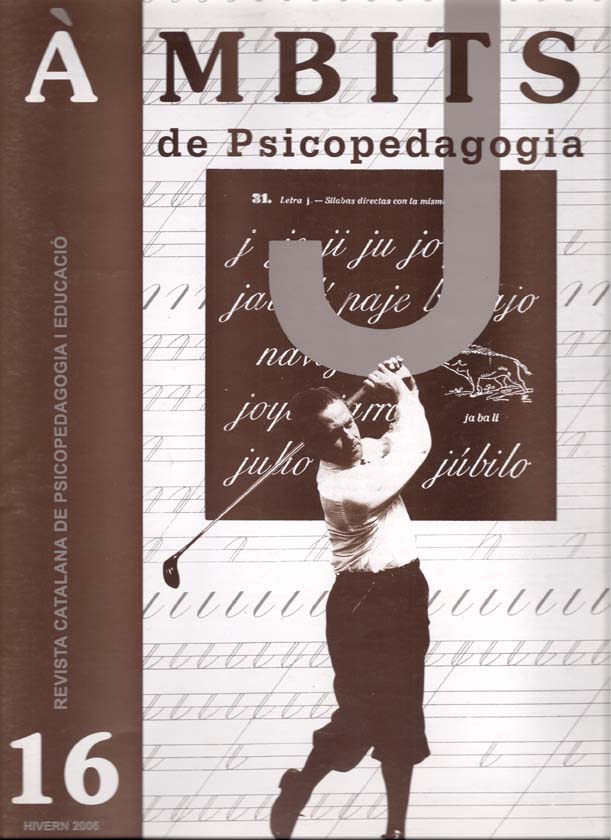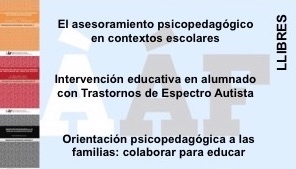Intervenció escolar en alumnes amb síndrome d'Asperger
Resum
La Síndrome d'Asperger (SA) és una categoria específica dels Trastorns Generalitzats de Desenvolupament (TGD), actualment també coneguts com Trastorns dins el espectre autista (TEA), que es caracteritza per dificultats en la reciprocitat social, interessos restringits, quocient intel·lectual normal o superior, molt excepcionalment inferior, un llenguatge fluid amb alteracions en la pragmàtica, desig de relació amb falta de les habilitats necessàries per fer i mantenir una amistat i un patró de comunicació "egocèntric" i limitat als seus interessos. És un trastorn bastant freqüent i sovint difícil de diagnosticar abans dels 6 anys. Hi predomina en el sexe masculí i en les nenes els símptomes poden ser menys clars.
L'escolarització ordinària és la més adequada. Els professionals que l'envolten han de tenir els coneixements necessaris per a interpretar les conductes i actituds d'aquests alumnes i proporcionar les eines que li permetin aprofitar les seves capacitats.
Referències
Frith U. (2004) “Emanuel Mille lecture: Confusions and controversies about Asperger syndrome” Journal of child Psychology and Psychiatry 45 (4) 672
Ghaziuddun G., Mountain-Kimchi K. (2004) “Defining the intellectual profile of Asperger Syndrome: Comparison with High-Functioning Autism” Journal of Autism and Developmental Disorders 34 (3) 29-284
Klin A., Volkmar F.R., Sparrow S.S., Cicchetti D.V and Rourke B.P (1995) “ Validity and Neuropsychological Caracterization of Asperger Syndrome: Convergence with Nonverbal Learning Disabilities Syndrome” Journal of Child Psychology and Psychiatry 36 (7) 1127-1140
López-Sala A., Sans A., Arellano M., Maristany M., Colomé R., Boix C., Garcia Cazorla A., Campistol J. (2004) “Asperger Syndrome: a revision of neurological and cognitive profiles of 20 children” Developmental Medicine and Child Neurology, Suplement Nº 100 October Vol.46
Mcintosh K.E., Dissanyke Ch. (2004) “Annotation: The similarities and differences between autistic disorder and Asperger’ disorder: a review of the empirical evidence” Journal of Child Psychology and Psychiatry 45:3 421-434
Martin P. (2004) El Síndrome de Asperger ¿Excentricidad o discapacidad social? Alianza Editorial col.Psicología.
Moyes R. (2001) Incorporating Social Goals in the classroom. Jessica Kingsley Publishers. London and Philadelphia.
Rapin I., Dunn M. (2002) “Update on the language disorders of individuals on the autistic spectrum” Brain and Development 25 166-172
Szatmari P. (2003) “Predictor of outcome among high functioning children with autism and Asperger Syndrome” Journal of Child Psychology and Psychiatry 44:4, 520-528
Wing L. (2002) “ The Epidemiology of Autistic Spectrum Disorder: Is the Prevalence rising? Mental Retardation and Developmental Disabilities Research Reviews 8: 51-161
Winter M. (2002) Asperger Syndrome – What Teachers Need to Know. Jessic Kingsley Publishers. London and New York.
Descàrregues
Publicades
Número
Secció
Llicència
Els autors/ores conserven els drets d'autor i concedeixen a la revista el dret de primera publicació de l'obra, registrada sota una llicència Creative Commons Reconeixement-NoComercial-Sense Obra Derivada. Aquesta llicència permet la descàrrega de les obres, i que es puguin compartir amb altres sempre que se’n reconegui l'autoria, però no permet que siguin modificades de cap manera, ni ser utilitzades amb finalitat comercial.
















